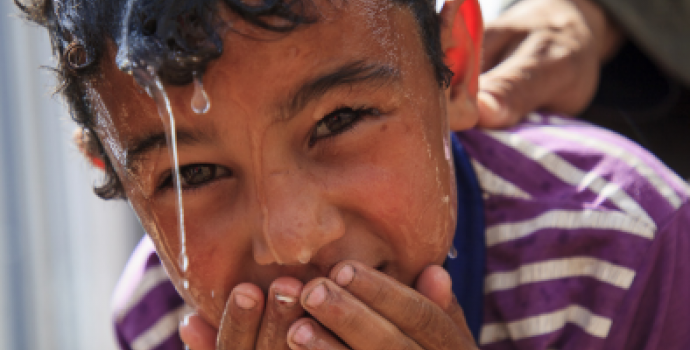Source: Save The Children
Funding for child protection in the world’s worst crises dropped from 42% of the amount required in 2019 to 24% in 2020, according to a report released today by a coalition of leading humanitarian agencies. This leaves millions of children affected by conflict and disasters without access to the services they need to keep them protected from harm.
The study finds that although child protection funding has increased to about US$ 178 million in 2020, up from about US$ 156 million in 2019 and $145 million in 2018, these additional funds are not keeping up with the massive increase in the number of children in need. This is also only a fraction of funding to humanitarian responses, making up just 0.8% of the total funds received for humanitarian response plans in 2020.
Across the world, protracted conflicts, COVID-19 and climate change have contributed to skyrocketing needs. No humanitarian response in 2020 received all the funds needed for child protection, with half receiving less than a quarter of the funds required.
Humanitarian agencies provide child protection services in emergency settings – including conflicts and natural disasters – when governments are unable to do so. This work includes identifying children separated from their families and reunifying them with their caregivers, providing mental health services to children who have experienced severe distress, and providing vital services and support for children who experience violence at home.
The report “THE UNPROTECTED: Annual spotlight on child protection funding in humanitarian action” is the third in a series focused on global humanitarian funding allocated to child protection, and was undertaken by Save the Children on behalf of The Alliance for Child Protection in Humanitarian Action, the Global Child Protection Area of Responsibility and the UNHCR. In addition to the funding gaps, the report reveals that child protection needs in emergencies have dramatically increased.
In many humanitarian settings, thousands of families and children lack the basic services to keep them safe. Lack of access to education, economic hardship, insecurity and families and communities torn apart expose children to widespread physical violence, sexual violence and emotional distress.
Gillian Triggs, Assistant Commissioner for Protection, UNHCR said:
“Children represent more than 40% of forcibly displaced people. This report shows us that investing in protecting children is both affordable and makes real differences in the lives of the most vulnerable – it is literally lifesaving.”
Amanda Brydon, Global Head of Child Protection Advocacy and Policy, Save the Children, said:
“Working in some of the most difficult places in the world, – trained and dedicated men and women have demonstrated that with these life-saving resources we are able to prevent harm against children before it occurs, to work with communities to make them safer – helping children access the care and support they need to be protected from violence, find safety, and recover.
“This report is a timely wake-up call for leaders to take immediate action to prevent violations of children’s rights, and respond to the urgent need for protection, including mental health and psycho-social support, family tracing and reunification, recovery and reintegration.”
The coalition of agencies is calling on donors to bolster the funding to child protection activities to match the percentage of funds to overall responses. The report also calls on humanitarian actors to prioritize child protection activities in their funding requests and humanitarian appeals and target under-funded situations.
Cornelius Williams, Director of Child Protection, UNICEF said:
“There is no debate that investing in children and their protection is a smart and ethical investment. When child protection actors have sufficient and reliable resources, they are able to save lives. From providing psychosocial support to victims of violence to reunifying separated children, and preventing early and forced marriage of children, child protection ensures a better future for all. Global leaders must step up their actions and funding for the protection of children in humanitarian crises.”
Note to editor:
- The Alliance for Child Protection in Humanitarian Action is a global, interagency group, co-led by UNICEF that sets standards and provide technical support to ensure that efforts to protect children from violence and exploitation are of high quality and effective.
- The Global Child Protection Area of Responsibility (CP AoR) is specifically focused on enhancing child protection coordination and response in humanitarian contexts (as defined as Humanitarian Coordinator and Early Warning contexts). The Global CP AoR ensures that the efforts of national and international actors to protect children are well-coordinated, achieving maximum quality and impact.
For further enquiries please contact:



